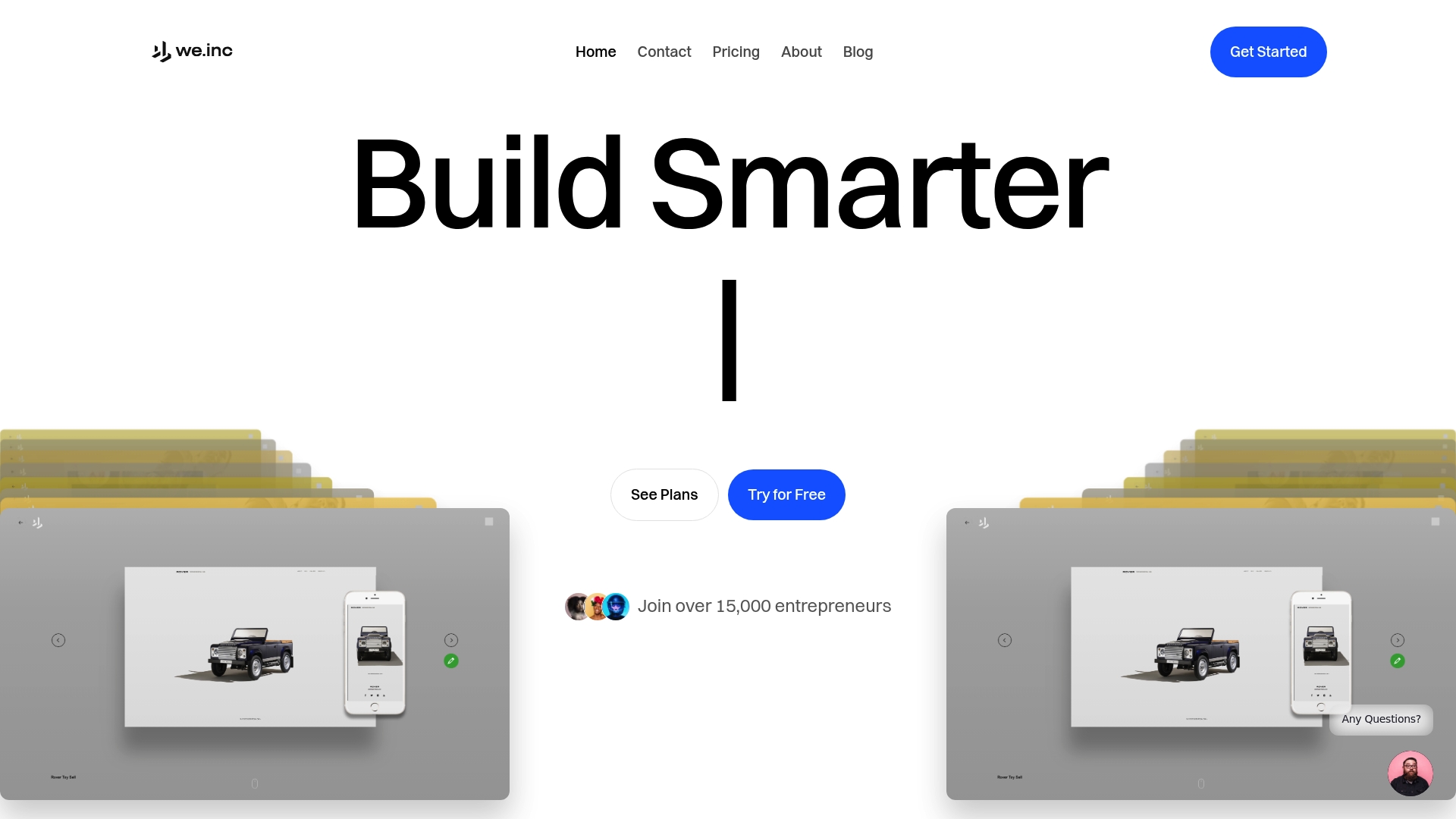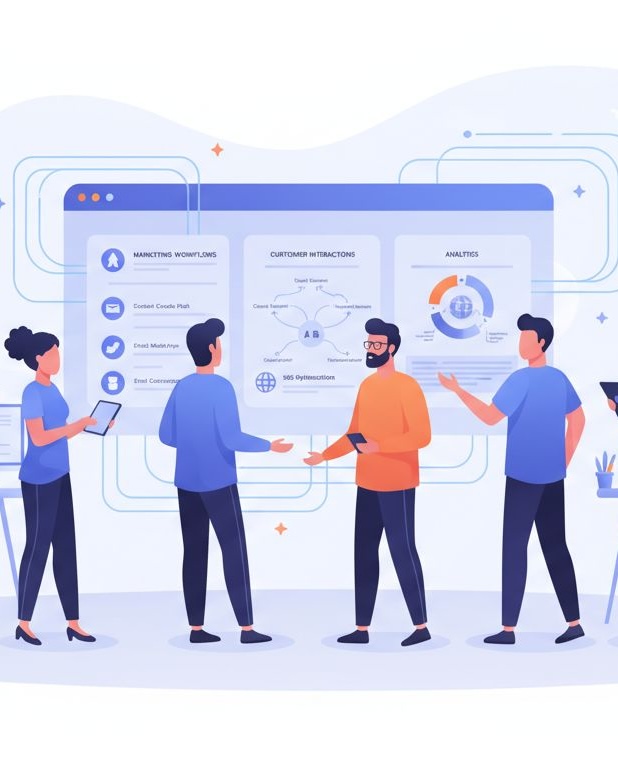Role of AI Content: Everything You Need to Know

Did you know that by 2024, over 60 percent of online content could be AI-generated? With so much of what we read, watch, and hear shaped by intelligent systems, understanding what AI content really is becomes vital. Many people hold outdated beliefs about accuracy and bias, yet the truth is far more complex. Exploring these differences helps businesses and creators make smarter decisions about using AI in their digital strategies.
Table of Contents
- Defining AI Content And Common Misconceptions
- Types Of AI Content Creation Tools
- How AI Content Automation Works
- Practical Applications For Businesses And Agencies
- Risks, Quality Concerns, And Compliance Issues
Key Takeaways
| Point | Details |
|---|---|
| AI Content Defined | AI content encompasses materials created by intelligent systems using machine learning algorithms, which analyze data patterns to produce text, images, audio, and video. |
| Human Involvement Necessary | Effective AI content creation requires substantial human oversight, including prompt crafting, fact-checking, and content refinement to ensure quality. |
| Risks and Ethical Concerns | AI-generated content poses risks such as biases and inaccuracies, necessitating robust verification processes and compliance with ethical standards. |
| Diverse Applications | Businesses utilize AI tools for various tasks, from marketing to customer service, significantly enhancing productivity and streamlining operations. |
Defining AI Content and Common Misconceptions
Artificial intelligence (AI) content represents material generated by intelligent systems capable of producing text, images, audio, and video without direct human authorship. According to Georgetown University, AI content involves outputs produced by advanced technological tools that can generate complex digital materials across multiple formats.
Unlike traditional content creation, AI-generated material emerges through sophisticated machine learning algorithms trained on extensive datasets. These systems analyze patterns, understand context, and produce original content that mimics human communication styles. Machine learning models enable AI to generate coherent text, realistic images, and even complex analytics by processing immense volumes of training information.
However, significant misconceptions surround AI content generation. As Old Dominion University highlights, many people incorrectly assume AI-generated content is universally accurate and completely unbiased. In reality, these systems can inadvertently reflect biases present within their training data, requiring careful human oversight and validation.
Key misconceptions about AI content include:
- AI operates completely autonomously without human guidance
- AI-generated content is always 100% accurate
- Machine learning models have zero inherent bias
- AI can replace human creativity entirely
Effective AI content creation actually demands significant human involvement. Professionals must craft precise prompts, review generated materials, fact-check outputs, and refine results to ensure quality and relevance. Explore our AI tools to understand how human creativity and artificial intelligence can collaborate powerfully.
Try it free today and transform your content strategy with intelligent, collaborative AI solutions.
Types of AI Content Creation Tools
AI content creation tools have rapidly evolved to support diverse digital content needs across multiple domains. According to Old Dominion University, these tools span multiple categories including text generation, image production, audio development, video creation, coding assistance, and even 3D modeling platforms.
Text generation tools represent the most widely adopted AI content creation technology. These sophisticated platforms use advanced machine learning algorithms to produce written content ranging from marketing copy and blog posts to technical documentation and creative writing. By analyzing vast datasets, these tools can generate coherent, contextually relevant text that mimics human writing styles.
Visual and multimedia AI tools offer extraordinary capabilities for content creators. Willamette University highlights innovative platforms like Pictory.ai for transforming long-form content into shareable videos, and Synthesia.io for creating professional videos with AI-generated avatars and voiceovers. These tools democratize high-quality content production, enabling professionals and small businesses to create sophisticated multimedia materials without extensive technical expertise.
Different types of AI content creation tools include:
Here’s a comparison of key types of AI content creation tools and their main uses:
| Tool Type | Example Platforms | Main Use Cases |
|---|---|---|
| Text Generation | GPT-3 ChatGPT Writer |
Blog posts Marketing copy Reports |
| Image Creation | DALL·E 2 Prompthunt |
Illustrations Graphics Concept art |
| Video Production | Designs.ai InVideo.io |
Social videos Ads Presentations |
| Audio Generation | WaveNet Adobe Speech Enhancer |
Voiceovers Podcasts Audio editing |
| Coding Assistance | DeepCode Codex |
Code suggestions Debugging |
| 3D Modeling | LeiaPix | Product mockups 3D designs |
- Text Generation Tools: GPT-3, ChatGPT Writer
- Image Creation Platforms: DALL·E 2, Prompthunt
- Video Production Tools: Designs.ai, InVideo.io
- Audio Generation Systems: WaveNet, Adobe Speech Enhancer
- Coding Assistance Tools: DeepCode, Codex
- 3D Modeling Platforms: LeiaPix
For entrepreneurs and marketers looking to streamline their content workflows, 7 Essential AI Tools for Startups to Boost Growth Fast can provide deeper insights into selecting the right AI content creation technologies.
Try it free today and revolutionize your content strategy with cutting-edge AI tools.

How AI Content Automation Works
AI content automation represents a sophisticated technological process where machine learning algorithms generate digital content autonomously. According to Old Dominion University, these systems operate by utilizing advanced algorithms trained on extensive datasets to analyze patterns and structures, ultimately producing new material that closely mimics human-created content.
Machine learning models serve as the fundamental engine driving content automation. These intricate systems break down vast amounts of training data into comprehensible patterns, enabling them to understand context, linguistic nuances, and creative structures. By processing millions of existing content examples, AI can generate text, images, audio, and video that reflect learned communication styles and creative approaches.
Generative AI tools offer remarkable flexibility across content creation scenarios. As Georgetown University highlights, these tools can assist with various tasks like drafting written content, suggesting revisions, and even producing visual representations from simple text prompts. The automation process typically involves several key stages: data ingestion, pattern recognition, content generation, and refinement.
Key stages of AI content automation include:
- Data Collection: Gathering extensive training datasets
- Pattern Analysis: Identifying linguistic and structural patterns
- Content Generation: Creating original content based on learned patterns
- Refinement: Adjusting outputs for quality and relevance
- Human Verification: Reviewing and editing AI-generated content
For entrepreneurs seeking to streamline their content workflows, 7 Powerful Examples of Business Automation for Success provides deeper insights into implementing intelligent automation strategies.
Try it free today and transform your content creation process with cutting-edge AI automation technology.

Practical Applications for Businesses and Agencies
AI content tools have transformed how businesses and agencies approach digital communication and productivity. According to Old Dominion University, organizations are leveraging these technologies for diverse applications including drafting emails, creating marketing materials, generating comprehensive reports, developing educational content, and producing multimedia presentations.
Strategic content generation represents a critical application of AI for modern businesses. These intelligent systems enable organizations to rapidly produce high-quality, contextually relevant content across multiple channels. Marketing teams can generate social media posts, blog articles, and advertising copy with unprecedented speed, while customer service departments can create standardized yet personalized communication templates that maintain brand consistency.
Georgetown University emphasizes that AI tools are strategically employed to enhance overall business productivity by automating routine tasks. This automation allows human resources to redirect their focus toward more strategic, creative, and complex organizational objectives. By handling repetitive content creation processes, AI enables teams to concentrate on high-value activities like strategy development, client relationship management, and innovative problem-solving.
Practical AI content applications across different business functions include:
- Marketing: Generating social media content, email campaigns, and advertising copy
- Sales: Creating personalized outreach materials and proposal drafts
- Customer Service: Developing response templates and FAQ documentation
- Human Resources: Crafting job descriptions and internal communication materials
- Training and Development: Producing educational content and instructional documents
For agencies looking to optimize their digital workflows, How to Build Agency Website That Converts Fast offers additional insights into leveraging technology for business growth.
Try it free today and unlock the potential of AI-powered content automation for your business.
Risks, Quality Concerns, and Compliance Issues
AI-generated content introduces complex challenges that demand careful strategic management. Old Dominion University highlights significant risks including potential inaccuracies, inherent biases, and critical ethical concerns that organizations must proactively address when implementing AI content technologies.
Content verification emerges as a fundamental requirement for responsible AI usage. Machine learning models, while sophisticated, can inadvertently generate information that appears credible but contains subtle inaccuracies or reflects underlying dataset biases. Businesses must establish rigorous human oversight processes to validate AI-generated content, ensuring accuracy, maintaining brand integrity, and mitigating potential reputational risks associated with distributing misleading information.
Georgetown University emphasizes the critical need for comprehensive compliance frameworks when integrating AI tools into professional environments. Organizations must develop clear guidelines that balance technological innovation with ethical considerations, ensuring AI-generated content adheres to legal standards, institutional policies, and industry-specific regulatory requirements.
Key risk mitigation strategies include:
- Human Verification: Implementing comprehensive content review processes
- Bias Detection: Regularly auditing AI outputs for potential prejudicial language
- Ethical Guidelines: Establishing clear organizational AI usage policies
- Continuous Training: Updating AI models with diverse, representative datasets
- Transparency: Disclosing AI-generated content when appropriate
To develop robust AI content strategies that minimize risks, professionals should continuously educate themselves on emerging technologies and best practices.
Try it free today and build a responsible, intelligent content automation approach for your business.
Unlock the Power of AI Content Automation with We.inc
Creating accurate, engaging, and bias-free AI-generated content requires more than just technology. As the article outlines, human oversight, content verification, and seamless automation are key to transforming AI content into a powerful business asset. If you are facing challenges like managing multiple digital tools, ensuring quality, or scaling your marketing efforts efficiently, We.inc offers a unified solution tailored for entrepreneurs and agencies alike.
Take control of your entire digital growth process by combining AI-driven content automation with zero coding website creation, AI chatbots, and effortless social media scheduling. Experience the We.inc platform and see how it streamlines complex workflows, reduces manual tasks, and safeguards content quality with intelligent automation.
Explore our all-in-one digital growth toolkit and harness AI content strategically to boost your marketing, sales, and client engagement today.
Elevate your content strategy now and gain the unfair advantage of smart automation. Visit We.inc and get started with ease.

Frequently Asked Questions
What is AI content and how is it created?
AI content refers to material generated by artificial intelligence systems, utilizing machine learning algorithms trained on extensive datasets to create text, images, audio, and video that mimics human communication.
What are the common misconceptions about AI-generated content?
Many misconceptions include the beliefs that AI operates completely autonomously, always produces 100% accurate content, has no inherent biases, and can entirely replace human creativity. In reality, human oversight is essential in the AI content creation process.
What types of AI content creation tools are available?
AI content creation tools include text generation (e.g., GPT-3), image creation (e.g., DALL·E 2), video production (e.g., Designs.ai), audio generation (e.g., WaveNet), coding assistance (e.g., DeepCode), and 3D modeling (e.g., LeiaPix), each serving various content needs.
What are the primary applications of AI content in businesses?
AI content tools are used in marketing for generating social media and advertising content, in sales for creating personalized outreach materials, in customer service for developing response templates, in human resources for crafting job descriptions, and in training for producing educational content.
%20(1).svg)

